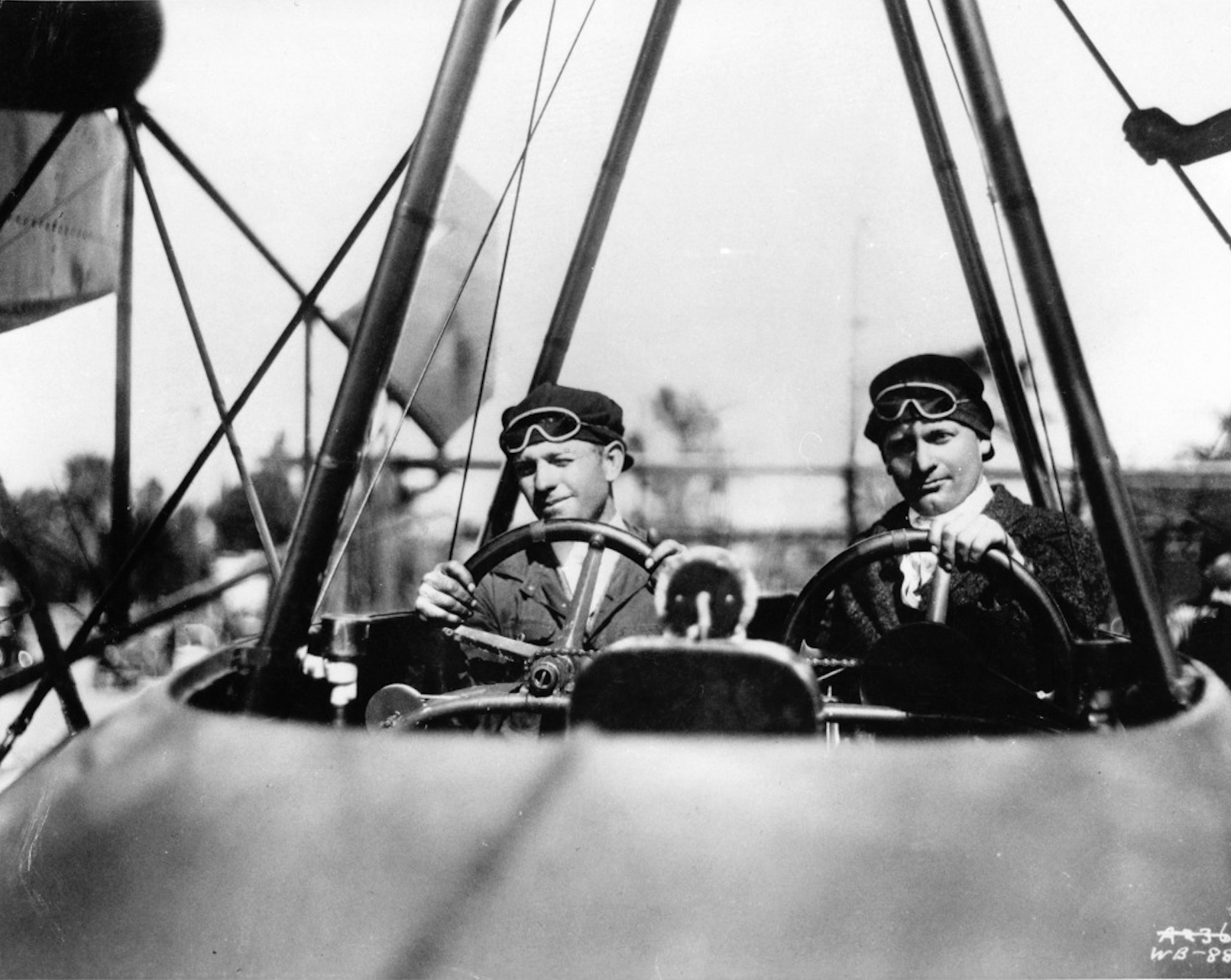
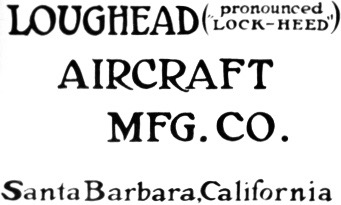
The F-1 took off from the waters off West Beach at Santa Barbara at 9:21 a.m., passed Point Fermin at 10:40 a.m., Oceanside at 11:55 a.m., and arrived at North Island at 12:23 p.m.² The airplane was flown by the two Loughead Brothers and carried two passengers.
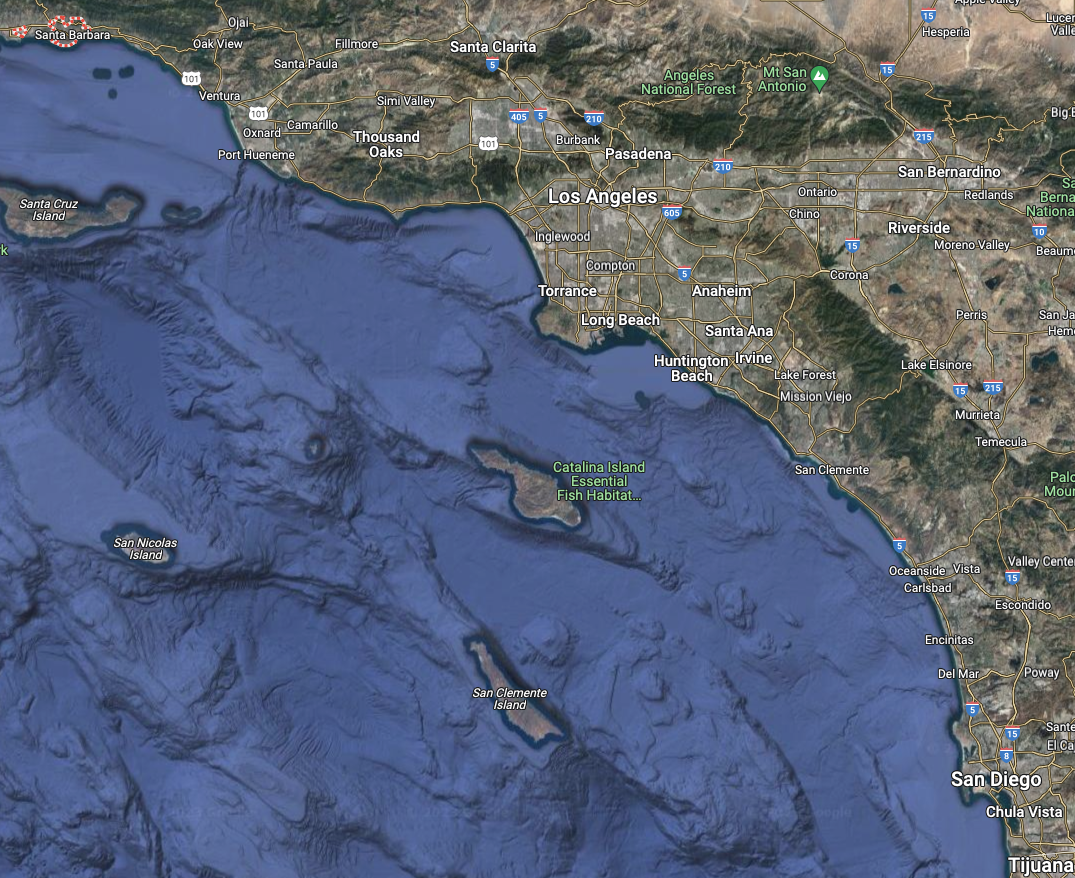
GREAT SEAPLANE MAKES RECORD ON FLIGHT
SAN DIEGO, April 12.—The big seaplane F-1, piloted by Malcolm Loughead and carrying three passengers, arrived here at 12:23 this afternoon.
The F-1 left Santa Barbara at 9:21 this morning and the estimated distance of 190 miles between that city and San Diego was therefore covered in exactly three hours and two minutes, a speed of approximately 63 1-3 miles an hour. The big seaplane was first sighted over Point Loma and within a few minutes alighted on the surface of San Diego Bay a short distance from the United States army aviation station at North Island. At 12:23 the seaplane reached the North Island landing and was hauled ashore by army men in waiting. According to Pilot Loughead, the trip was made without incident, although during the latter part of the trip headwinds were met with which retarded the speed of the aircraft.
————
Three hours and two minutes by air flight to San Diego from Santa Barbara—that’s the record established today by Allan and Malcolm Loughead, in their big hydroplane, F-1, carrying as passengers Alfred Holt and Carl Christopherson, employees of the Loughead Aeroplane Manufacturing Company.
The distance of 190 miles, by airplane, was made without mishap. The start from Santa Barbara gathered quite a group of citizens, among them being a number of stockholders in the Loughead company, and thousands would have been there to witness the notable start had it been known at what hour the flight would start.
During the morning the Lougheads received a dispatch from government officials at the aviation headquarters on North Island, San Diego, informing them that air and ocean conditions were perfect all the way south, and asking that the flight be made today.
The Lougheads were even at that moment getting ready for the departure, and arrangements were hastened. The bay was ruffled by a breeze, and the combers sparkled in the warm sunlight, as the hydroplane motors were started, and the big fans began to whirr. There were hasty farewells, and every man waved his hat and every woman present shook a kerchief, while the cheers broke forth from all as the big plane sped down the ways, and went skidding into the sea.
At the wheels were Allan and Malcolm Loughead, while Christopherson and Holt occupied places in the passengers’ quarters at the head of the big plane. The machine was guided in a half circle, taking a southwesterly course at first, until beyond the pleasure pier, where it rose from the bosom of the sea, and rapidly ascended to an altitude of about 500 feet, when it took a southeasterly course, and heading down the channel toward Oxnard.
It was a perfect get-away, and no bird ever took to the air more gracefully than the big plane rose above the sea and soared away, easily, the very hypothesis of graceful motion, and the speed at which it was travelling soon took it out of sight to the south.
From Ventura and Hueneme the flight was witnessed by a large number of citizens, and at Point Fermin, near San Pedro, the passing of the plane attracted great interest. In fact, all the way south, great crowds watched eagerly and it was a continuous ovation that greeted the airmen from the land.
At San Diego the fliers were met by a big crowd, and their stay in the southern city is being made one prolonged reception. From many points along the coast today telephone and telegraph messages have flashed, reporting the passing of the machine, whose eventful trip is the biggest sensation of the day in aviation circles.
It is stated that the flight establishes a long distance record for a passenger-carrying hydroplane. The plane will be tested out by the government aviation officials, and it is expected that within a very few days the announcement will be made of a contract awarded the Loughead Brothers by the government for other machines.
Experts who have examined the F-1 state that it is perfectly built, and the finest machine of its class afloat.
—The Santa Barbara Daily News and the Independent, Friday, 12 April 1918, Page 1, Column 6
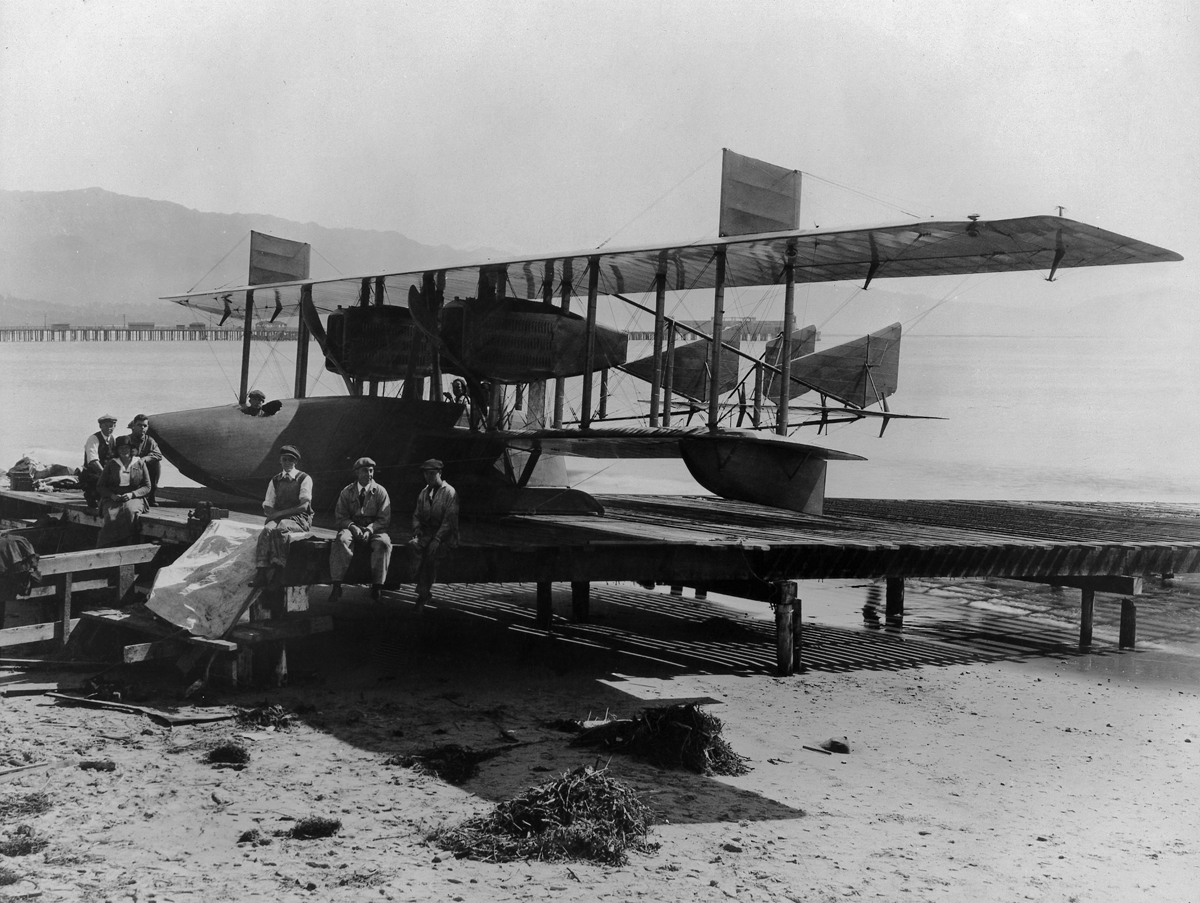
Designed by friend and employee John Knudson (“Jack”) Northrop, and built in a garage on State Street, the F-1 was launched on a wooden ramp at West Beach.
The airplane was intended for the U.S. Navy, but the end of World War I ended the requirement for new airplanes.
The Loughead F-1 was a twin-engine, three-bay biplane flying boat operated by a crew of 2. It could carry 8–10 passengers. The airplane was 35 feet (10.668 meters) long. The span of the upper wing was 74 feet (22.555 meters) and the lower wing was 47 feet (14.326 meters). The height was 12 feet (3.658 meters). The F-1 had an empty weight of 4,200 pounds (1,905 kilograms) and gross weight of 7,300 pounds (3,311 kilograms).
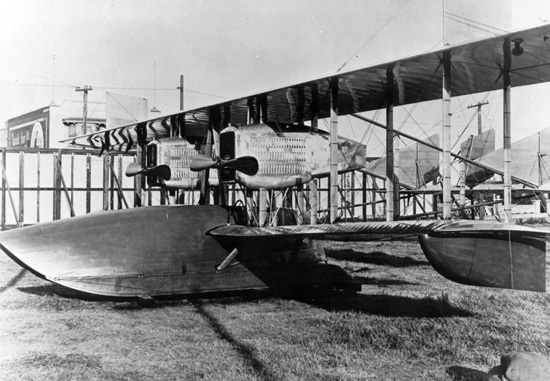

The F-1 had a cruise speed of 70 miles per hour (113 kilometers per hour) and maximum speed of 84 miles per hour (135 kilometers per hour).
The F-1 was converted to a land plane with tricycle undercarriage and redesignated F-1A. During an attempted transcontinental flight, it twice suffered engine failure and was damaged. Reconfigured as a flying boat, the airplane was used for sight-seeing before being sold. It was abandoned on a beach at Santa Catalina Island, off the coast of Southern California, and was eventually destroyed.
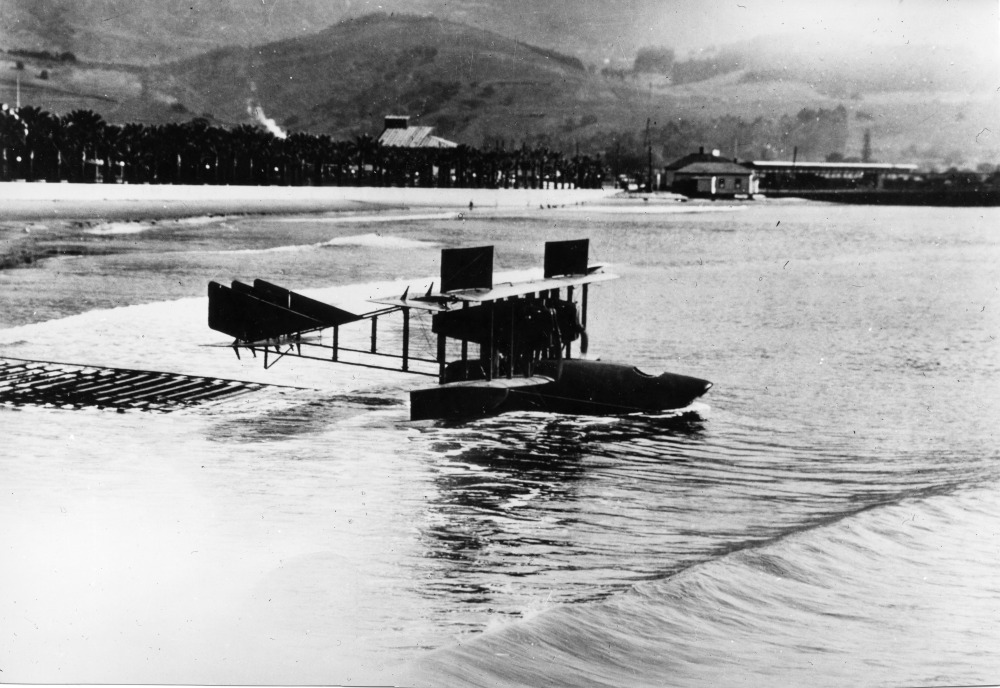
The Loughead Aircraft Manufacturing Company would go on to become one of the world’s leading aerospace corporations.
¹ The certifying source for this “record” is not known. The distance flown and elapsed time for the flight cited here are from Wikipedia. The Great Circle distance from today’s Santa Barbara Airport (SBA) to NAS North Island (NZY) is 193 statute miles (311 kilometers). However, contemporary news reports suggest that the Loughead brothers flew the F-1 along California’s southern coastline, rather than making a direct flight across the Santa Barbara Channel, Santa Monica Bay, the Catalina Channel, and on to San Diego Bay. At the time of this flight, the governing body for aviation in the United States was the Aero Club of America, while official flight records were certified by the Fédération Aéronautique Internationale, which was based in France. The ACA ceased to exist in 1923, replaced by today’s National Aeronautic Association. The FAI online records database list only two world records set in 1918, both altitude records set by Major Rudolph Schroeder, 18 September 1918, at Dayton, Ohio.
² The Los Angeles Times, the Oakland Tribune and the San Bernardino Daily Sun state that the time of the takeoff was 9:23 a.m. The Tribune cites the arrival time as 12:24 p.m., while the Daily Sun reported the time as both 12:32 and 12:24. Various newspapers reported the distance flown by the F-1 as 190 miles (306 kilometers), while The Salt Lake Herald-Republican-Telegram printed that it was 200 miles (322 kilometers).
© 2023, Bryan R. Swopes
